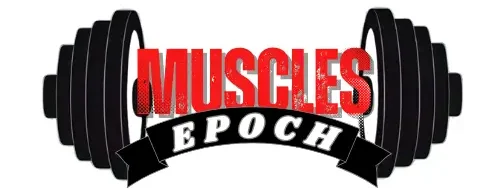Cable Biceps Workout:When it comes to building strong, defined arms, the biceps are often the first muscle beginners want to train—and for good reason. They not only enhance upper body aesthetics but also support functional movements in your daily life. One of the most beginner-friendly and effective ways to target your biceps is with cable machines.
Cable workouts offer constant tension throughout each rep, which leads to better muscle activation and faster progress—especially for beginners. Whether you’re new to the gym or simply want a more controlled, joint-friendly way to work your arms, cable biceps exercises are the perfect place to start.
In this guide, we’ll walk you through the benefits of using cables, the best beginner exercises, and tips to get serious results without overcomplicating your routine.
Why Choose Cable Workouts for Biceps?
Constant Tension for Better Muscle Activation
One of the standout benefits of using cable machines for biceps workouts is the constant tension they provide throughout the entire range of motion. Unlike free weights, where gravity can take over at certain angles—especially at the top or bottom of a curl—cables maintain resistance from start to finish. This continuous tension keeps your biceps engaged the entire time, which leads to greater muscle activation and better results over time.
For beginners, this means that even with lighter weights, you can get a more effective workout. Constant tension encourages strict form, improves the mind-muscle connection, and reduces the chances of using momentum or cheating through reps. It also targets both the concentric (lifting) and eccentric (lowering) phases of the movement, which is essential for building strength and promoting muscle growth.
Additionally, cable machines allow for smooth, controlled motion that’s easier on the joints—perfect for those just starting out or returning to the gym after a break. So if you’re aiming to make every rep count and develop your biceps efficiently, cable workouts are a smart and science-backed choice.
Safer and More Controlled Movements
One of the biggest advantages of using cable machines—especially for beginners—is the ability to perform movements in a safe and controlled manner. Unlike free weights, which require greater stabilization and can easily lead to swinging or poor form, cables offer guided resistance that helps you stay in the correct path of motion. This makes it much easier to focus on isolating the biceps without recruiting unintended muscles or risking injury.
Cable machines also reduce the strain on your joints and connective tissues. Because the resistance is consistent and smooth, there’s less jerking or sudden force on the elbows and shoulders, which is especially beneficial for beginners who may not yet have strong stabilizing muscles. The ability to control the speed of both the lifting and lowering phases also promotes better technique and reduces the temptation to rush through reps.
In addition, cables often come with adjustable pulleys and attachments, allowing you to customize the movement to fit your body mechanics. This adaptability not only enhances safety but also helps build confidence as you develop proper form and muscle control. For anyone just starting a biceps training routine, cable machines offer a reliable and beginner-friendly path to progress.
Versatility and Easy Progression
One of the greatest strengths of cable machines—especially for beginners—is their versatility. Whether you’re training in a commercial gym or using a home cable setup, you can perform a wide range of biceps exercises with minimal equipment and quick adjustments. From standard standing cable curls to single-arm variations, rope hammer curls, and reverse-grip curls, the options are almost endless.
This variety allows beginners to target different parts of the biceps, such as the long head, short head, and brachialis, helping develop more balanced and defined arms. It also keeps workouts interesting and engaging, which is key to staying consistent and avoiding plateaus.
In addition to variety, cable machines make progression easy and safe. Unlike free weights, where jumping from one dumbbell to the next can be a big leap, cable stacks usually offer smaller, incremental increases in weight. This makes it easier for beginners to gradually build strength without overloading their muscles or compromising form.
Plus, many cable machines come with multiple attachments—like straight bars, EZ bars, or rope handles—each offering slightly different grips and angles that can challenge the biceps in new ways. This makes it simple to scale your workouts based on your goals and fitness level, whether you’re aiming for endurance, hypertrophy, or pure strength.
In short, the cable machine isn’t just beginner-friendly—it’s a long-term tool that supports continuous improvement and adaptability as you grow stronger.
Best Cable Biceps Exercises for Beginners
Standing Cable Biceps Curls

The standing cable biceps curl is a foundational exercise that every beginner should include in their arm routine. It closely mimics the motion of a standard dumbbell curl but with the added benefit of constant tension from the cable machine, which helps stimulate the biceps more effectively throughout the entire range of motion.
To perform the exercise, attach a straight bar or EZ-curl bar to the low pulley on a cable machine. Stand upright with your feet shoulder-width apart, grasp the bar with an underhand grip (palms facing up), and keep your elbows close to your sides. Curl the bar upward toward your shoulders while keeping your upper arms stationary. Pause briefly at the top to squeeze your biceps, then slowly lower the bar back to the starting position. Maintain a controlled tempo to maximize muscle engagement and avoid using momentum.
This movement targets both the long and short heads of the biceps, helping to build overall size and definition. Because you’re standing and engaging your core for stability, it also provides a mild secondary benefit to posture and balance. Beginners will find it especially helpful for developing proper curling technique, learning how to isolate the biceps, and improving mind-muscle connection.
You can modify the grip (wider or closer), or use different attachments like a rope or single handle to create slight variations and challenge the muscles in new ways. Whether you’re new to strength training or simply looking to add structure to your arm workouts, the standing cable biceps curl is a safe and effective go-to exercise.
Cable Rope Hammer Curls

Cable rope hammer curls are a fantastic variation of the traditional biceps curl that target not only the biceps brachii but also the brachialis and brachioradialis—two muscles that sit deeper beneath the biceps and contribute to fuller, thicker-looking arms. This makes them an essential exercise for beginners who want to build well-rounded arm development from the start.
To perform this movement, attach a rope handle to the low pulley of a cable machine. Stand upright and grasp the rope with a neutral grip—palms facing each other. Keep your elbows tucked in and pull the rope upward by bending at the elbows, bringing your hands toward your shoulders. At the top of the movement, pause briefly to squeeze the arms, then slowly lower the rope back down in a controlled manner.
The neutral grip used in rope hammer curls places less strain on the wrists and elbows, making it a beginner-friendly and joint-safe option. It also emphasizes the brachialis muscle, which lies underneath the biceps and pushes the biceps up from below, enhancing arm thickness over time.
Another advantage of using the rope attachment is the increased range of motion at the top of the curl. As your hands naturally separate at the peak of the movement, you get a stronger contraction and more effective muscle engagement compared to fixed-grip attachments.
Incorporating cable rope hammer curls into your beginner cable workout routine helps build strength, size, and grip stability, all while keeping the motion smooth and controlled. They’re also a great complement to standard cable curls for complete biceps training.
Single-Arm Cable Curls

ingle-arm cable curls are an excellent isolation exercise that helps beginners build a strong mind-muscle connection with each bicep individually. Unlike barbell or dual-arm cable curls, this movement allows you to focus on one arm at a time, helping correct strength imbalances, improve form, and ensure equal development on both sides.
To perform this exercise, attach a single handle to the low pulley on a cable machine. Stand sideways to the machine with your working arm holding the handle in a supinated grip (palm facing up). Keep your elbow close to your torso and curl the handle up toward your shoulder while keeping the rest of your body still. Squeeze the bicep at the top, then slowly return to the starting position. After completing your reps, switch arms and repeat.
What makes single-arm cable curls particularly effective for beginners is the ability to control the movement more precisely. Because you’re not relying on both arms simultaneously, there’s less room to compensate or use momentum. This teaches better muscle control and technique, which is crucial when starting out.
Another advantage is that the cable provides even tension throughout the curl, especially at the peak contraction—something free weights often lack. The resistance stays steady regardless of arm position, allowing for a deeper burn and greater activation of both the short and long heads of the biceps.
You can also slightly rotate your wrist during the curl (a technique called supination) to further engage the biceps. And by adjusting the height of the pulley or your body angle, you can create subtle variations to target the muscle from different angles.
In summary, single-arm cable curls are a versatile, beginner-friendly exercise that improves symmetry, focus, and technique, while still delivering serious arm gains.
Tips for Maximizing Results
Use Proper Form Over Heavy Weight
One of the most important lessons for beginners starting a cable biceps workout—or any strength training program—is that proper form always outweighs heavy weight. Lifting too much too soon not only increases your risk of injury but also reduces the effectiveness of the exercise by shifting the tension away from the target muscles.
When you focus on good form, every rep becomes more productive. For biceps exercises in particular, that means:
- Keeping your elbows close to your sides and stationary throughout the movement.
- Avoiding swinging or using your back to lift the weight.
- Controlling the tempo, especially during the lowering (eccentric) phase.
- Fully extending your arms at the bottom of the movement and squeezing the biceps at the top.
Using excessive weight often leads to momentum-driven reps, where other muscles like the shoulders or back take over. This not only diminishes biceps activation but can also create muscle imbalances or strain your joints.
On the other hand, starting with a manageable weight allows you to:
- Develop better muscle control and coordination.
- Strengthen your mind-muscle connection.
- Gradually increase resistance in a safe, measurable way.
Remember, building muscle is not about impressing anyone in the gym—it’s about progressive improvement and injury-free training. Mastering form with lighter weight ensures a solid foundation that will make heavier lifts far more effective in the long run.
For beginners, this approach leads to better long-term results, safer workouts, and the confidence to advance without setbacks.
Start with 2–3 Sets, 10–15 Reps
When you’re new to cable biceps workouts, structuring your sets and reps properly is crucial to building strength and muscle effectively while minimizing fatigue and injury risk. A great starting point for beginners is to perform 2 to 3 sets of 10 to 15 repetitions per exercise.
This rep range is ideal because it strikes a balance between muscular endurance and hypertrophy (muscle growth). Doing too few reps with heavy weights can be overwhelming for beginners and may increase injury risk, while very high reps might focus too much on endurance rather than building muscle size and strength.
Why 2–3 sets?
This number allows you to perform enough volume to stimulate muscle growth without overtraining. Beginners’ bodies need time to adapt to new stresses, and excessive volume can lead to soreness and fatigue, which may discourage consistency. Starting with 2–3 sets provides a manageable workload that supports gradual progress.
Why 10–15 reps?
This moderate rep range encourages muscle engagement throughout the set and promotes good form since you’re unlikely to sacrifice technique to lift heavier weights. It also allows you to experience the muscle “burn” that signals effective fatigue and growth stimulus.
Rest periods between sets should typically be around 30 to 60 seconds for beginners, enough time to recover but still keep your muscles challenged. You can adjust rest time based on how you feel and your overall fitness level.
As you gain experience and strength, you can gradually increase the number of sets or lower the rep range while increasing weight to continue challenging your muscles and prevent plateaus.
In summary, starting with 2–3 sets of 10–15 reps offers a beginner-friendly, effective way to build your biceps safely and efficiently—helping you develop strength and muscle tone without overdoing it.
Don’t Skip Rest and Recovery
Rest and recovery are often overlooked but absolutely essential components of any successful cable biceps workout program—especially for beginners. When you exercise, you’re actually creating small micro-tears in your muscle fibers. It’s during the rest periods that your body repairs these tears, building the muscle stronger and bigger over time. Without adequate recovery, your progress can stall or even reverse, and the risk of injury increases significantly.
For beginners, it’s crucial to schedule rest days between your biceps workouts. This doesn’t mean complete inactivity but rather giving your muscles time to heal and rebuild. Typically, allowing 48 hours between intense arm sessions is recommended. This recovery window helps reduce muscle soreness, prevent overtraining, and keep your energy levels high for your next workout.
In addition to rest days, sleep quality plays a major role in muscle recovery. Aim for 7–9 hours of sleep each night, as this is when your body releases growth hormones that support muscle repair and growth. Poor sleep can impair your recovery and reduce your workout performance.
Nutrition is another key part of recovery. Consuming a balanced diet rich in protein, healthy fats, and carbohydrates supplies the necessary building blocks and energy for muscle repair. Staying hydrated also helps flush out toxins and supports overall bodily function.
Ignoring rest and recovery might lead to fatigue, decreased motivation, and even injuries like tendonitis or strains. So, to maximize your biceps gains and keep your training sustainable, treat recovery with the same importance as your workouts. Rest smarter, train harder.
Sample Beginner Cable Biceps Workout Routine
Quick 20-Minute Gym Routine
For beginners with busy schedules, finding time to work out can be a challenge. That’s why a quick 20-minute gym routine focused on cable biceps exercises is a fantastic way to get serious results without spending hours in the gym. This routine is designed to maximize efficiency by targeting the biceps with compound and isolation movements that provide both strength and hypertrophy benefits.
Here’s how you can structure your 20-minute cable biceps workout:
- Warm-Up (3-5 minutes):
Start with a light cardio warm-up like brisk walking or cycling to increase blood flow and prepare your muscles. Follow this with some dynamic arm movements or light cable curls using very low resistance to activate your biceps. - Main Workout (15 minutes):
Focus on 3 cable exercises, performing 2–3 sets of 10–15 reps each, with 30-60 seconds rest between sets. For example:- Standing Cable Biceps Curls: Build overall biceps strength with this foundational movement.
- Cable Rope Hammer Curls: Target the brachialis and forearms to add thickness and grip strength.
- Single-Arm Cable Curls: Focus on symmetry and mind-muscle connection by working each arm independently.
- Cool-Down (2 minutes):
End your session with gentle stretching of the biceps, forearms, and shoulders to improve flexibility and aid recovery.
This routine balances intensity and volume, providing enough stimulus to promote muscle growth while fitting perfectly into a tight schedule. The cable machine’s constant tension ensures you get the most out of every rep, even in a short session.
By committing to this quick routine 2-3 times a week, beginners can build impressive biceps strength and size, making every minute count. Remember, consistency is key—even a short, focused workout can lead to serious results over time.
Weekly Workout Schedule
Establishing a weekly workout schedule is crucial for beginners aiming to make steady progress with their cable biceps workouts. A consistent routine not only helps build muscle but also creates healthy habits that support long-term fitness success.
For beginners, a balanced weekly plan should include 2 to 3 dedicated biceps training sessions spaced out with rest or active recovery days in between. This spacing allows your muscles adequate time to repair and grow stronger, while preventing burnout or injury.
Here’s a sample weekly schedule tailored for cable biceps workouts:
- Monday: Cable Biceps Workout
Focus on compound and isolation exercises like standing cable curls, rope hammer curls, and single-arm cable curls. Perform 2-3 sets of 10-15 reps each. - Tuesday: Rest or Light Cardio
Engage in low-impact activities such as walking, yoga, or cycling to promote blood flow and recovery without taxing your muscles. - Wednesday: Upper Body or Full-Body Workout
Incorporate other muscle groups like back, shoulders, and chest to build overall strength and balance. You can also include light biceps work if desired. - Thursday: Rest or Active Recovery
Use this day to stretch, foam roll, or perform mobility exercises to keep your body flexible and reduce soreness. - Friday: Cable Biceps Workout
Repeat your biceps-focused routine, gradually increasing weights or sets as you gain strength. - Saturday: Optional Cardio or Rest
Depending on your energy levels, do moderate cardio or rest to prepare for the upcoming week. - Sunday: Rest
Allow your muscles and nervous system to fully recover.
By following a consistent weekly schedule, beginners not only promote muscle growth but also develop discipline and motivation. Remember, quality trumps quantity—stick to your plan, listen to your body, and adjust as needed.
Over time, you can increase training frequency, add variety to your exercises, or include other advanced techniques to keep your workouts challenging and effective.
Tracking Progress and When to Increase Weight
Tracking your progress is a key habit that separates casual gym-goers from those who consistently see real results. When it comes to cable biceps workouts, keeping an eye on your performance not only motivates you but also ensures that you’re progressively overloading your muscles—a fundamental principle for building strength and size.
How to Track Progress:
Start by recording important details such as the weight used, number of sets and reps completed, and how the exercise felt. You can use a notebook, a workout app, or even a simple spreadsheet. Keeping track helps you notice small improvements over time, like being able to perform an extra rep or handling a slightly heavier weight with good form.
Signs It’s Time to Increase Weight:
- Reps Become Easier: If you can comfortably complete all your sets and reps without feeling challenged, it’s a clear sign your muscles are ready for more resistance.
- Lack of Muscle Fatigue: Muscle fatigue at the end of a set signals you’re working at the right intensity. If you’re not experiencing this “burn,” you might need to up the weight.
- Form Remains Solid: Always ensure your form stays impeccable. If you can add weight without compromising technique, it’s time to increase. Sacrificing form can lead to injury and less effective workouts.
When increasing weight, make small, gradual increments—typically around 5-10%. This approach helps your muscles and joints adapt safely and reduces injury risk. After increasing the weight, you might find it challenging to complete your target reps at first. That’s normal! Stick with the new weight until you regain strength and confidence before progressing further.
Remember, progressive overload isn’t just about lifting heavier weights—it also includes increasing reps, sets, or reducing rest time. By consistently tracking your workouts and knowing when to push harder, you’ll set yourself up for continuous gains and avoid plateaus.
Conclusion
Starting your fitness journey doesn’t have to be overwhelming. With just a few simple cable exercises, you can effectively target your biceps and build a solid foundation for future growth. These beginner-friendly moves are easy to learn, safe to perform, and highly effective when done consistently and with proper form.
Whether your goal is stronger arms, better definition, or overall fitness, cable biceps workouts are a smart and versatile solution. Stick to the plan, focus on technique, and don’t forget to rest and recover—your results will follow.
Ready to see real progress? Grab that cable handle and get started!

